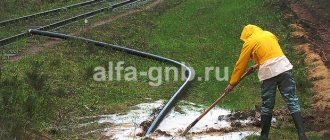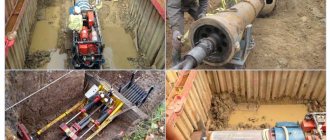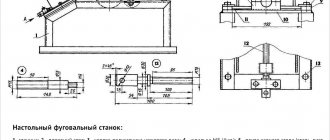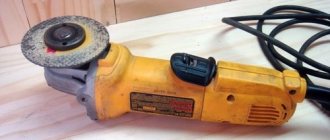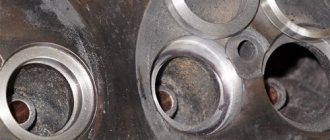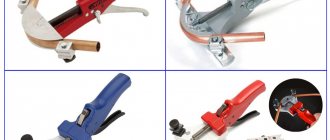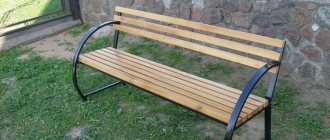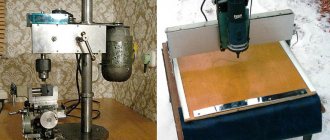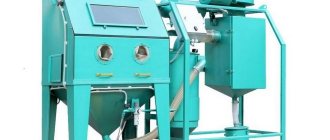It is not uncommon for an obstacle to arise in the way of communications laid underground. For example, a railway, a highway, a lake or some other objects that cannot be bypassed. In these situations, laying pipes under the road using the puncture method - the trenchless method - helps out. It allows you to work with different types of soil, including hard ones (for example, rock).
Puncture under the road using the HDD method is usually done when there is a need to make a long well (more than 50 m) and the pipe diameter is more than 600 mm.
Cost of HDD
| Pipe diameter | Price up to 500 m | Price over 500 m |
| 63 mm | 1,000 rub/m | 900 rub/m |
| 110 mm | 1,800 rub/m | 1,500 rub/m |
| 160 mm | 2,000 rub/m | 1,800 rub/m |
| 225 mm | 3,000 rub/m | 2,500 rub/m |
| 315 mm | 4,500 rub/m | 4,000 rub/m |
| 450 mm | 6,000 rub/m | 5,500 rub/m |
Prices are indicated in rubles for installation of one meter of pipe, including 20% VAT.
The price includes: digging pits, drilling, welding pipes, installing a thread or embedded cable, caulking holes, backfilling pits, as-built documentation for punctures.
Percussion drilling
First of all, pilot drilling is carried out from the first pit. After this, the rod is pressed into place with the drill head installed.
In the final pit, the rod is connected to the pipe head to expand the well. They are pulled into the first pit. As a result, the soil is displaced in different directions.
With this drilling method, it is recommended to use installations specially designed for these purposes. But they are used only in those soils that are mobile and can be displaced.
The essence and advantages of HDD puncture technology
Laying utility networks by HDD puncture under the road consists of drilling a pilot well followed by back drilling with an expander to obtain a drilling channel of the designed diameter. A pipeline is then connected to the expander and pulled through the well.
Pipelines under roads of any category must be laid in a protective case. The process is controlled using an electronic location system. The curvature of the well trajectory is limited only by the permissible bending angle of the drill rods.
Advantages of the technology:
- work is carried out without digging and backfilling trenches, regardless of weather conditions or time of year;
- there is no destruction of the road surface with the embankment, adjacent sidewalks, or pedestrian paths;
- damage to the surrounding landscape and landscaped areas in cities, cottage villages, and dacha communities is minimized;
- does not interfere with the movement of cars, passenger transport, or pedestrians, which is especially important in areas with difficult road conditions or in cramped urban conditions;
- the duration of work, the number of involved equipment and labor, and financial costs are reduced;
- soil does not accumulate on the surface in large quantities;
- puncture length up to 800 m, diameter up to 1,000 mm.
When HDD punctures under the road, due to reverse excavation, strengthening bentonite solution is not used, because The canal walls are held in place by compaction. With the help of HDD it is possible not only to lay, but also to replace old pipes.
Conduct research on the soil you are going to pierce
Self-punctures are performed without specialized equipment that can penetrate sand and clay through rock. Make sure that after going halfway you won't come across any unexpected rock formation. It is worth examining the soil so that your puncture does not collapse or sag over time. In order to study the soil, you need to contact specialists who carry out geophysical and geodetic work. As a rule, companies engaged in horizontal directional drilling have such specialists on their staff. You can also contact companies specializing in land management work. Geophysical research will allow:
- determine the composition and some properties of the soil
- identify specific soil
- identify hazards at the construction site
- find underground voids
- determine the level, speed and direction of groundwater filtration flow
All this will allow you to protect the tool from damage, and ensure the reliability and durability of your construction work.
Work order
- Local exploration . Work begins with determining the soil category and determining the groundwater level.
- Studying the diagrams of utility networks already laid nearby.
- Coordination of work with the traffic police or organizations responsible for the operation of roads.
- Drawing up project documentation . Based on the data obtained, a pipeline route layout is designed. A technical and economic comparison of all factors that subsequently influence the choice of installation is carried out to achieve the optimal result.
They select drilling equipment and tools, the composition of the drilling fluid, and draw up technological maps. The finished project is coordinated with the owners of the territory, existing utility networks, and representatives of the administration. Once the project has been approved, construction of the pipeline begins.
- Preliminary work . Pipes and a drilling rig with associated equipment are delivered to the site. Dig pits or ditches and, if necessary, install drainage.
- Well drilling and expansion . Initially, a pilot well is drilled. The process is controlled by a locator operator using signals from a probe located in the drill head and location. After complete penetration, the head is replaced with a conical or drilling reamer, then the well is drilled back. The process is repeated one or more times as necessary.
All work is carried out in compliance with technological regulations, norms and rules for organizing construction, geodetic work, safety precautions, and fire safety.
- Pipeline pulling . The pipes are welded, the end of the pipeline is connected to the expander and pulled through the well to the starting point of drilling.
- Final works . The laying process ends with caulking the holes, backfilling pits or pits and cleaning the construction site. The soil surface is improved.
Pipe insulation methods
Insulation for pipes
Thermal insulation of water pipes is necessary. This especially applies to the above-ground part of the pipe, located outdoors and in unheated rooms.
As insulation, you should choose a non-flammable and moisture-resistant material that will not swell when in contact with condensate. It must be resistant to environmental influences and temperature changes.
Thermal fiber and basalt wool are used from sheet materials. They retain heat well, but require an external waterproofing layer.
Convenient and inexpensive material - polystyrene foam. Cases made from it are sold in hardware stores. All that is required is to enclose the pipe in a heat-protective casing and seal it with several layers of tape. Heat insulators made specifically for pipes are convenient when working with corners and turns.
Expanded polystyrene is used for both external and internal work, and it is quite durable, which facilitates its reuse if it is necessary to dismantle the system.
If you place a water pipe inside another pipe, an air cushion is formed between their walls, which retains heat. But this is an additional measure; insulation will still be required.
If you follow all the rules for underground communications, you can independently install high-quality water supply that will last for many years.
Our offers
has been laying pipelines using the HDD puncture method under roads and other obstacles since 2010. The company has accumulated extensive experience; we have completed over 250 large-scale projects in Moscow and the Moscow region.
We work on our own equipment:
- drilling rig Vermeer Navigator D33×44 (USA), there are rubber linings on the tracks to save asphalt;
- drilling rig Vermeer Navigator D80×100 (USA);
- Japanese mini-excavator Yanmar VIO-20-2 with rubber tracks;
- Nissan Atlas vehicle for transporting tools and equipment.
The company's highly qualified employees will perform HDD on a turnkey basis, including under non-standard conditions. We work with strict adherence to deadlines and provide the customer with all the as-built documentation.
Microtunneling
When implementing this method, the machine must be equipped with a drive. It is located in a special ring with a cutting edge, as well as in the drill head. The auger, located immediately behind the drive, is driven by the pressing unit from the first pit.
To prevent damage to the pipe, a special pipe intended for transportation is inserted inside it. It is also intended to remove soil into the first pit.
Such a system is controlled using a laser and a target. This allows you to achieve precision work even at a distance of up to 100 meters. The deviation in this case is possible no more than 3 centimeters.
Cost of work
The price of the work includes taking out the route in kind by a surveyor, drilling a well, welding and pulling pipes, digging and backfilling pits, caulking holes, blowing construction thread into each pipe, and drawing up as-built documentation. The price also includes VAT 20%. Activities for improvement and restoration of the territory are paid separately.
The cost of work does not depend on the category of soil, the presence of intersections with existing communications, the time of year, or the remoteness of the site. The final price for HDD across the road is calculated after preparing the project and selecting the type (diameter) of pipes.
Cost calculator
m
Total price: 33,000 rub.
Conditions of conduct according to regulatory documents
The laying of any pipeline, be it polypropylene or steel, is determined by standards. It is SNiP that regulates many technical issues that allow all work to be completed efficiently, ensuring safety. To lay polypropylene pipes, the following requirements must be met:
Diagram of the advantages of polypropylene pipes over other materials
- It is imperative to take into account the freezing point of the soil. Usually it is at a level of 1.4 meters, so if the pipeline is at a lower level, then in winter the water in it will simply freeze and it will be impossible to use the pipe. Therefore, during installation it is necessary to accurately calculate such moments; in the future this will only be beneficial.
- The laying of pipes largely depends on what buildings are located on the site, whether there are nearby roads and highways, communication and other utility networks. If you are not sure where exactly the pipeline can be laid, it is better to contact specialized construction companies.
- When laying underground, we also take into account the characteristics of the relief and soil; in some cases it is necessary to protect the pipe with the help of special casings.
The polypropylene pipeline is laid subject to the following steps:
- First you will have to prepare a trench for laying, which should be larger than the diameter of the pipe. So, for 110 mm pipes you will need a trench with a width of 600 mm. The minimum distance between the pipe wall and the trench should be 20 cm. The burial depth should be 50 cm greater.
- The bottom is sprinkled with sand with a cushion thickness of approximately 50-100 mm, after which the sand is compacted.
- The laying starts from the building; when installing sewer pipes, the socket should face the end of the pipe going outside;
- A special lubricant is used to connect individual elements.
- When laying sewerage, you must remember that a slope of 2 cm must be maintained for every meter of the route.
- After installation, the pipeline is covered with sand and compacted only from the sides. If necessary, before this the pipe is wrapped with a heat-insulating layer;
- At the very end, polypropylene pipes are connected to a common highway, treatment plant, etc. This must be done using polypropylene solder.
What problems may arise during installation?
When laying polypropylene pipes underground, some problems may arise:
- the structure of the soil does not allow digging to the required depth;
- in winter, the soil freezes strongly, which can cause damage to pipes;
- There is a building on the site that is not possible to get around.
In this case, there are several ways to solve these problems:
- If the soil is too loose or hard, it is recommended to make a puncture, in which a steel pipe is first laid, and a polypropylene pipeline is inserted into its cavity.
- When the ground freezes, it is recommended to lay a heating cable along the entire route. This requires significant costs, and expenses in winter may exceed those planned, but in any case, this option is cheaper than constantly repairing burst pipes.
- If there is any structure or object along the route that cannot be damaged, it is recommended to use trenchless construction methods, that is, puncture. In this case, you can not only lay the pipeline, but also protect it with a steel casing. When laying such networks, it is necessary to carefully look at the layout of communications on the site so as not to damage existing ones.
Using a Cable Layer
Before starting work, the trajectory of the cable layer is marked with poles. This technology is adapted for the installation of high-voltage wires. Cable laying machines should not be used in wetlands. The installation for underground installation of wire lines is serviced by 2-3 people. The movement of the cable layer is carried out by 1-2 bulldozers or wheeled tractors. If the work is carried out on country roads, then the damage from the work will be minimal: the road surface will be compacted to its original condition in 2-3 days.
